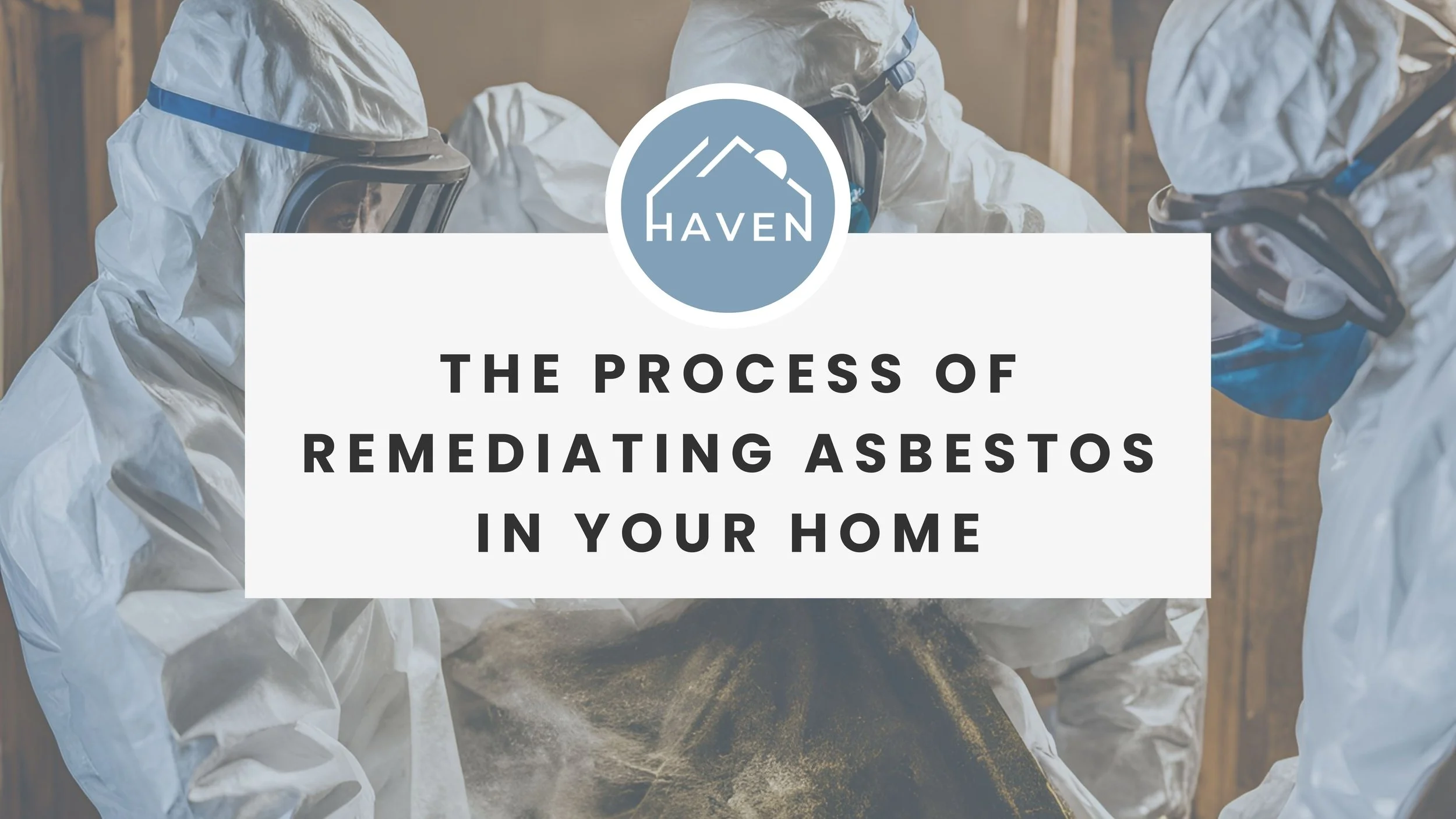The Process of Remediating Asbestos in Your Home
The Process of Remediating Asbestos in Your Home
Asbestos, renowned for its durability and fire-resistant properties, played a pivotal role in home construction across Canada, including Victoria, BC, during much of the 20th century. However, as its health risks became evident, regulations phased it out of use. For homeowners living in or renovating properties built before 1990, understanding asbestos and the remediation process is crucial to maintaining safety and protecting property value.
A Brief History of Asbestos in Victoria
Asbestos saw widespread use in Victoria homes between the 1940s and the late 1980s. Its unique properties made it ideal for insulation, fireproofing, and strengthening construction materials. However, by the 1970s, studies revealed that asbestos fibres, when inhaled, could cause severe health issues, including asbestosis, lung cancer, and mesothelioma. Despite these findings, asbestos-containing materials (ACMs) persisted in building supplies until tighter regulations in the 1990s. Today, its legacy remains embedded in many older homes, posing risks to residents during renovations or repairs.
Where Asbestos May Be Found in Homes
In Victoria, homes built before 1990 may contain asbestos in several components, such as:
Insulation: Vermiculite insulation, often found in attics, is a common asbestos-containing product.
Ceilings: Textured ceilings, also known as “popcorn ceilings,” frequently included asbestos.
Flooring: Vinyl tiles, sheet flooring, and the adhesives used to install them often contained asbestos.
Walls: Joint compounds and some types of plaster used in drywall.
Pipes and Furnaces: Insulation wraps for pipes, boilers, and ducts may include asbestos.
Roofing and Siding: Some shingles and siding materials.
Living Safely with Asbestos
While asbestos is hazardous when disturbed, undamaged ACMs are generally safe. Fibres only pose a risk if released into the air. Here are tips for safely coexisting with asbestos:
Avoid Disturbance: Refrain from drilling, sanding, or cutting materials that may contain asbestos.
Inspect Regularly: Monitor areas with suspected ACMs for signs of damage, such as cracks or wear.
Consult Professionals: Engage experts for testing and guidance before renovations.
How is Asbestos Remediation Done?
Asbestos remediation is a specialized process governed by strict regulations in Canada to protect both residents and workers. Here’s an in-depth look at how it’s handled:
Testing and Assessment:
A certified asbestos professional collects samples from suspected materials.
Laboratory analysis determines the presence and concentration of asbestos fibres.
A remediation plan is developed based on the findings.
Preparation and Containment:
The affected area is sealed off using heavy-duty plastic sheeting to prevent fibres from spreading.
Negative air pressure machines are installed to ensure airborne fibres remain confined.
Removal:
Workers wear specialized protective gear, including respirators and disposable coveralls.
ACMs are carefully removed by hand or with specialized tools to minimize disturbance.
Materials are placed in heavy-duty, leak-proof polyethylene bags specifically designed for asbestos waste. Bags are double-sealed and labelled for safe handling.
Encapsulation (If Applicable):
Sometimes, asbestos materials that are intact and difficult to remove are encapsulated with a sealant to prevent fibre release.
Cleanup and Disposal:
The area is thoroughly cleaned with HEPA vacuums and damp wipes to remove residual fibres.
Asbestos waste is transported to licensed disposal facilities in compliance with environmental regulations.
Air Quality Testing:
Post-remediation air tests are conducted to ensure the area is safe for re-entry.
Costs of Asbestos Remediation
The cost of asbestos remediation varies depending on the scope of work, the location of the asbestos, and the size of the affected area. Homeowners in Victoria can expect to pay:
Asbestos Testing: $300 to $1,000, depending on the number of samples.
Small-Scale Removal: $1,000 to $3,000 for localized areas, such as a single ceiling or floor section.
Full-Scale Remediation: $5,000 to $20,000+ for larger projects, such as removing asbestos from an entire home or extensive insulation. While these costs may seem significant, the investment ensures the health and safety of occupants and enhances the property’s marketability.
Why Hire Professionals?
Attempting to remove asbestos without professional help is not only hazardous but also illegal most times. Certified contractors:
Follow stringent safety protocols.
Use specialized equipment and containment methods.
Ensure compliance with WorkSafeBC and environmental standards.
Protecting Your Investment
For homeowners, planning renovations or preparing a property for sale, addressing asbestos concerns proactively shows responsibility and care. Buyers often view remediated homes as safer and more desirable, making the process a worthwhile investment.
-
Haven Realty Group
Disclaimer: This article is for informational purposes only and does not constitute professional advice or establish an agency relationship. Homeowners should seek independent professional advice for their specific circumstances.

